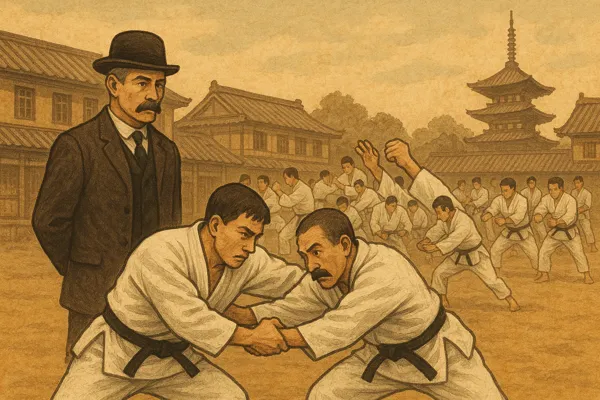
The Meiji era and the birth of modern martial arts
Here at Meiji Martial Arts,our name pays homage to a key time in Japanese history, which marked the end of supremacy for the Samurai and the start of Emperor Meiji’s rule in 1868.
The Meiji era changed Japan significantly making it much more open to the world. But in terms of martial arts, this period also brought forward significant changes in the way they were taught.Martial arts were no longer reserved for the Shogunate (Samurai) and as with the rest of Japan, the teachings would need to become more open. Here is how martial arts teachings changed during this crucial period of history.
The birth of Budo
For centuries,martial arts were about teaching combat for survival, war and incapacitating a rival opponent.The teachings were very much focused on enhancing warrior clans. But with the Samurai being disbanded,this changed. What came instead was a philosophy of Budo - which is literally translated as “the way of the warrior”.
In contrast to what had been taught previously, this new philosophy would not be focused around battle techniques. Instead, it was based on building character and resilience through the usage of ancient warrior ways.Martial arts teachings became much more open to the general public .Rapidly,martial arts became global.
Martial arts in education
Disbanding the Samurai was very important,but of equal significance was the Meiji government's insistence on integrating martial arts into mainstream education. Previously this had not been the case, but now martial arts were being used to help children with their fitness and discipline from an early age, a model that martial arts schools like us have adopted over the years.Integrating martial arts into the school curriculum was incredibly important in terms of ingraining the lessons of discipline into Japanese society. This also helped cement a martial arts shaped identity that people often associate with Japan, which has inspired so many people around the world to practise martial arts.
Birth of martial arts bodies
With martial arts becoming part of daily Japanese life,there was now a need for organisations to be established to consolidate these disciplines and teachings. During the Meiji era,this is exactly what happened as two crucial institutions were established. The first was the Kodokan Judo institute, which was founded in 1882. This became the main national body for Judo in Japan.
The other big organisation to emerge was the Dai Nippon Butoku Kai. This became the largest and most significant martial arts institution in Japan teaching,standardising many types of martial arts including Kendo, Aikido and Jiu-Jitsu. Without these central bodies,it is highly unlikely that martial arts would have been able to spread across Japan in the way that they did.
The global spread of martial arts
Perhaps the most important thing that the Meiji era enabled was the exporting of martial arts around the world. Figures such as Jigoro Kano (the founder of Judo) encouraged his students to travel to Europe and America,and teach Judo. Today there are martial arts schools everywhere, but back in the 1880s this concept was revolutionary.The early 20th century saw other popular disciplines like Karate emerge from smaller islands such as Okinawa. The founder of Shotokan Karate, Gichin Funakoshi, was of the view that this discipline could be exported to the West, which is what happened. Additionally, post WW2 saw many American servicemen, stationed in Japan and Okinawa, train and bring back Karate to the States.
Meiji Martial Arts today
Martial arts became a truly global phenomenon, in no small part because of Emperor Meiji’s transformation over 150 years ago. At Meiji Martial Arts, we are proud of our heritage and our roots. The enormous changes that took place in Japanese society during the Meiji era in the late 1880s created the conditions for great Sensei's to bring their teachings to the West.
If you want to learn martial arts disciplines firmly based on this heritage, book a free trial by clicking here.